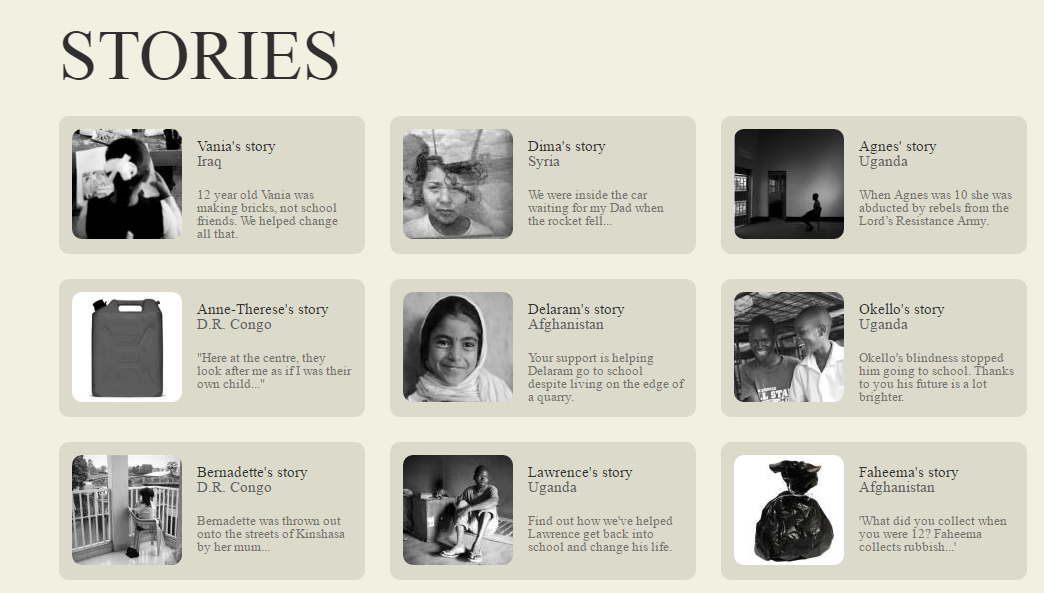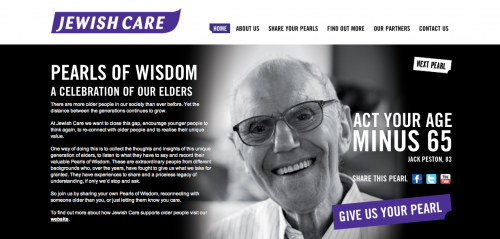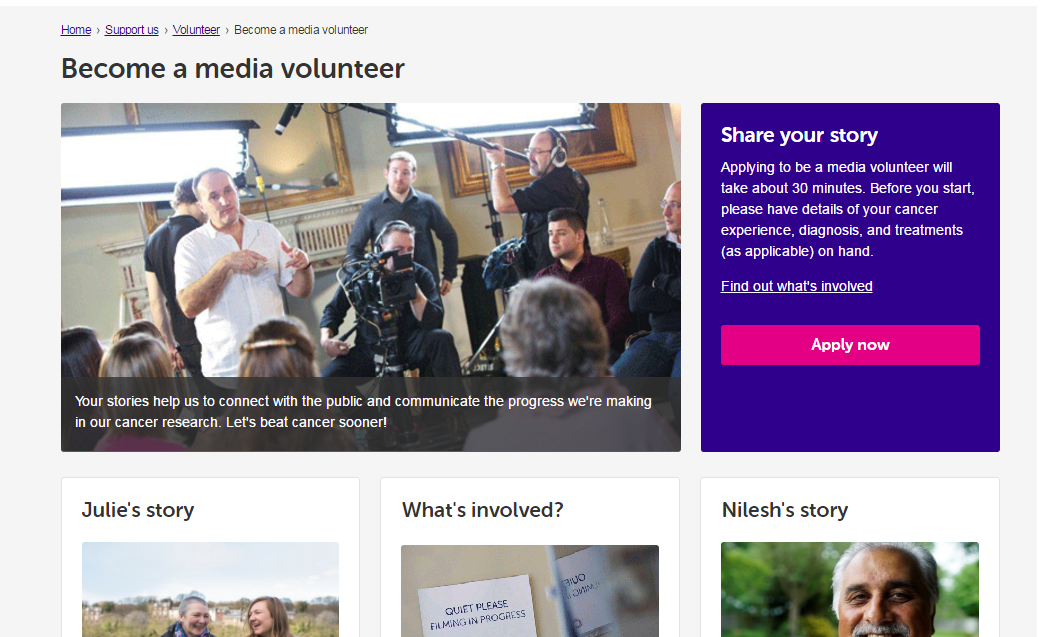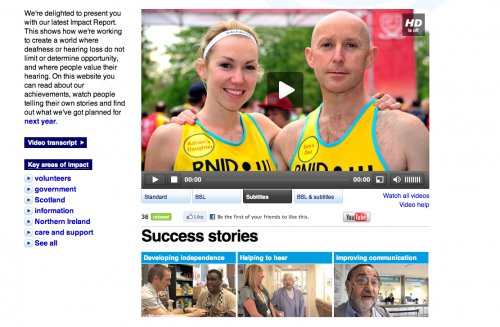Marketing & communications, Fundraising
Ten tips for increasing your charity’s impact through storytelling
Storytelling can be a great way to engage donors.
Before a charity puts anything on their website, writes a press release, posts on Facebook or communicates with their supporters in any other way, they should ask themselves one very important question, “So What?”.
We’re all very wrapped up in the work our organisations do and assume they must also be fascinating to others, but if you want your intended audience to care about what you are trying to tell them, ask yourself that question, and then tell them a great story about why they should care. Think about the greatest stories told in books, films and TV; they all have certain things in common, great characters, use of emotion and the journey the story and its characters take. You may ask, what do great literature or the best TV shows have in common with your stories? But if you keep in mind those three things, great characters, a journey and emotion, your stories will have much more impact by creating meaningful connections with donors.
1. Don’t tell people what your charity does, tell stories about who it benefits
It’s very easy to explain what your organisation does and what projects you run, but it’s much more effective and memorable to tell stories about who you are benefiting and how you have changed lives. Think about great characters and build them into your press releases films and websites.
War Child provide life-changing support to the most vulnerable children whose families, communities and schools have been torn apart by war. This page features on their website and tells stories of some of the people they have helped, allowing prospective supporters to relate to them better.
2. Take the audience on a journey
The War Child stories take you on a clear journey through how the charity has helped Vanis, Dima and Agnes. As potential supporters or donors, this journey helps you understand what the charity is doing and its impact.
3. Think about what your one message is
Jewish Care used their Pearls of Wisdom campaign across their website, Facebook, Twitter and in communications with donors. Try and stick to one clear message to help your supporters get your story. Make it clear what you want them to do, is it to give money, volunteer or just to know more about your cause?
4. Use emotion
“I’ve learned that people will forget what you said, people will forget what you did, but people will never forget how you made them feel.”
-Maya Angelou
People will care more if you make them feel something through your stories, it doesn’t matter if you make them feel happy or sad, but making them feel something is essential.
Cancer research does a great job here of both telling personal stories and making you feel something when you watch the stories of people they have helped. Carolan Davidge, Director of Communications at Cancer Research UK explains the difference that was made when CRUK started telling stories:
“Telling the true stories of cancer patients alive today thanks to the progress made by research, has been vital to growing public engagement and financial support for the charity’s vital work.”
Bronx Zoo use humour to great effect.
5. But make sure it’s genuine and authentic
True human interest stories will engage your potential supporters and bring to life what you do. Oxfam America bring to life their work by having one young supporter tell his story in his own words.
6. It’s all in the detail
Spend time talking to potential case studies for stories, and really listening to them by asking thoughtful, open questions. It’s when you really spend time, and really listen that the little details come out, those little nuggets of gold that make the stories even more memorable and personal. If possible talk to people face to face or on the phone, make good notes.
7.Build a system to collect case studies
Involve the people at the grass roots in your organisation in collecting stories. They know what’s going on out there and who has great stories. Set up a system to collect and file those stories and collect contact info from relevant people. Cancer Research has established a system on their website to encourage people they have helped to send in their stories.
8. Think about stories in terms of 5 basic questions
When you’re thinking about your story and talking to potential case studies, ask these 6 basic questions;
- Who
- What
- When
- Where
- Why
- How?
If you ask all of these questions, you’ll definitely make sure you get all the details you need and that a journalist will need if you want to offer your story to the press.
9.Build story telling into all of your communications
Get used to thinking in stories when you are writing annual reports, for your website or for e-newsletters. Tell stories about people, not lists of facts. If you’re writing a press release, include a case study to bring the story to life for the journalist.
Annual reports are also a great place to tell your stories, RNID do a great job here of showing the impact of their work in visual terms through personal stories, photos and video.
10. Ask yourself “So what?”
I know I started with this point, but I think it’s worth repeating! Ask yourself why someone should care about the story you are telling them. Think about what will make them care, can you make it more personal, more emotional or just more interesting?
You find this original blog post on Mediastories



